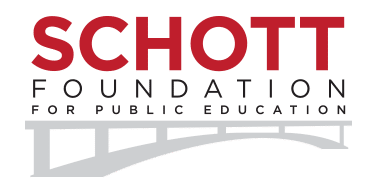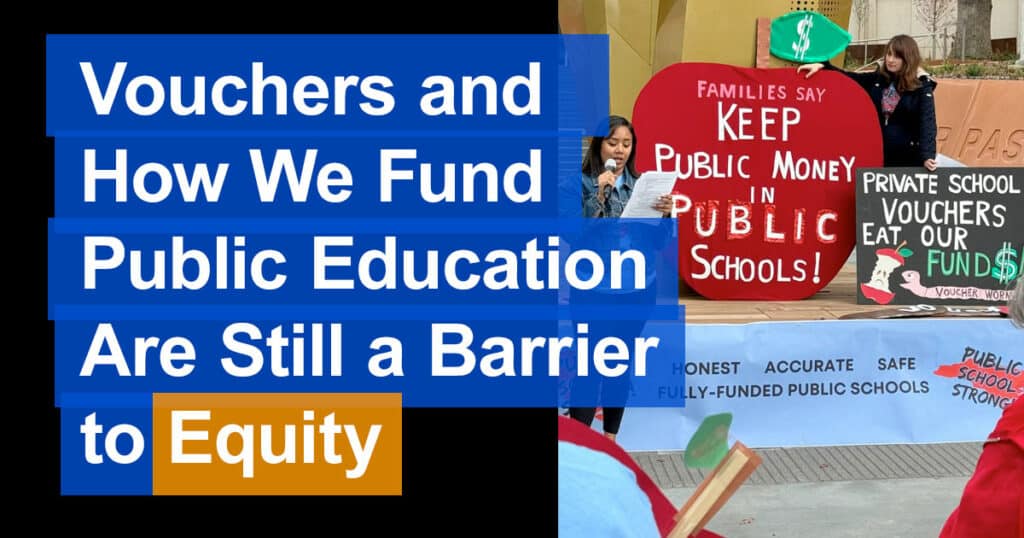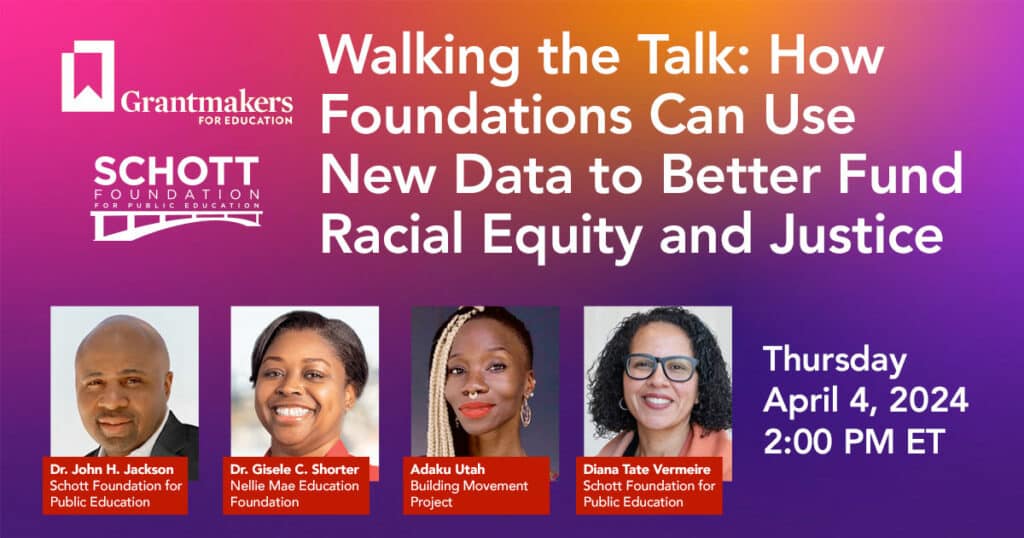Blog
How Can We Expand Opportunities to Learn for Native Youth?

A groundbreaking new report released yesterday details the barriers facing Native youth in urban public schools and highlights inspiring solutions already being implemented in communities across the country. Our latest webinar covers the Native Urban Indian Family Coalition’s Resurgence: Restructuring Urban American Indian Education to understand how to scale up these promising alternatives.
Featuring Janeen Comenote, Executive Director of the National Urban Indian Family Coalition (NUIFC) and Dr. Joe Hobot, President and CEO of the American Indian OIC, this webinar is a useful introduction for those new to issues affecting Native youth, and also provided new data and tools for experienced activists and advocates.
Webinar moderator and Schott Vice President of Programs & Advocacy Edgar Villanueva opened the webinar by raising an important first point: who do we mean when we’re talking about urban Native youth?
“When we talk about urban Indians it’s really shorthand for a lived experience of those Native people who live in cities and the surrounding suburbs of cities,” Comenote said. “According to the 2010 Census, 78% of American Indians live off reservations, and 92% of Native students attend public schools. This report is timely for these students and for enriching their educational experience.”
Villanueva also pointed out that many Native youth in cities are mislabeled, or assumed not to be Native, which presents a serious problem both to their academic success and their self-understanding. “When we’re talking about improving opportunities for margin communities and improved opportunities to learn for students, it’s important to consider the cultural context in which Natives operate so we can make sure our policy recommendations benefit all youth,” he said.
The Resurgence report begins with a critical history of the relationship between public education and Native communities. “It’s a pretty hard history,” Hobot said, “full of trauma, a lot of overt genocidal practices to deconstruct or eliminate our traditional cultures and practices.” The report recounts the 19th century establishment of militaristic “boarding schools” for Native youth in which:
incoming students would be immediately subjected to the complete overhaul of their appearance and attire, and forced into the use of the accepted rules of etiquette as expressed by American society. Additionally, in response to the long-standing complaint how access to their base population and families would often times undermine the progress made by schools at “civilizing” American Indian youth, the government would intentionally design these schools to be constructed far away from the homelands of the students.
By the mid-20th century, with reservation economies in free-fall due to the Federal government’s removal of funding, the Indian Relocation Act of 1956 greatly accelerated the pace of Native people moving away from reservations and into nearby cities. This shift brought Native youth in contact with traditional public schools on an unprecedented scale. As the report details, “American Indian students were forced to jettison their own cultural identities — including their languages, customs, and religious beliefs — if they were to have a chance at succeeding within the American public education system.”
The yawning gaps between Native and white academic achievement that persist through the present day shouldn’t be blamed on educators, Hobot said. “It’s the administrators and the proprietors of this rigid, industrialized system that I think need to be held accountable.” All too often, he pointed out, the proposed solutions are simply a doubling-down on the current system.
However, there is cause for hope. The report covers seven examples across six cities that show the promise and potential of alternative education programs for Native youth. “Some of those techniques that they’ve incorporated or developed on their own really turn about what we see in a standard classroom — the learning space, the curriculum, who’s present, how the relationship between teacher and students oscillates — all of these things echo what we know to be true from our culture.”
As the report describes them:
In response to this very real threat to their young people, these communities acted by creating seven alternative programming and alternative sites that were purposefully anchored within the values of their community and in the belief that the people could no longer a ord to remain idle. […]
Now, their doors were opened, these seven programs have achieved many of the academic outcomes that they had originally set out after – perhaps not to the sweeping degree required — but in demonstrable ways that stand out as an improvement upon the what is being produced by many other school districts across the nation.
The six cities highlighted are:
- Denver, CO
- Seattle, WA
- Albuquerque, NM
- Portland, OR
- Minneapolis, MN
- Los Angeles, CA
“We didn’t see any national publication like this about urban Indian education specifically. There’s a lot of work about Native education, but not much work that really focuses on those students who are going to schools in these cities,” Comenote said. “Part of the intent for us at NUIFC is to shine a spotlight on those sites and voices that are doing the work that so many communities really want to be doing.”
Learn more about public education and Native youth by watching the full webinar above, and dig into the alternative programs NUIFC is lifting up by reading their new report.


